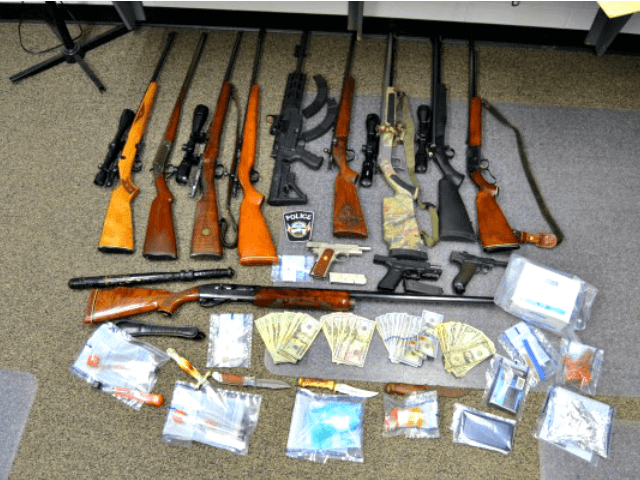The Department of Justice made good on promises to issue a new procedure for federal “adoptions” of local and state civil asset forfeitures Wednesday with a new policy directive aimed at reintroducing the practice while combating abuses.
Speaking to reporters at the main DOJ building, Deputy Attorney General Rod Rosenstein said that so-called “adoptive seizures” were an “important tool” for local law enforcement. “It’s an important tool to see that the proceeds of crime are not returned to criminals. It’s also important to use it fund law enforcement,” the DAG said.
An announcement on civil asset forfeiture policy had been expected since Attorney General Sessions approvingly mentioned the practice in his Monday speech to the National District Attorney’s Association.
Wednesday’s announcement affects only a relatively small corner of the asset forfeiture universe, the practice of adoption, whereby cash and other assets taken by local and state law enforcement agencies during criminal investigations are taken up by the Justice Department, which then handles the legal aspects of the seizures. The proceeds then are, in part, used to fund programs that provide crime-fighting resources to those local police.
The practice was severely curtailed in 2015 when then-Attorney General Eric Holder ended the equitable sharing programs described above amid widespread allegations of abuse and impropriety. Wednesday’s directive seeks to reinstate the federal-local cooperati0n of the past while instituting safeguards that address critics concerns.
Local law enforcement officers will be required to undergo specific training in DOJ’s new requirements in order to participate in asset forfeiture adoption. New forms will have to completed detailing to the Justice Department the circumstances under which the assets were seized. Cash seirures under $10,000, a special concern for critics of asset forfeiture, will be subject to special scruitiny and permissible only when made pursuant to a state warrant or arrest.
Those whose assets are seized will now be required to get notice within 45 days, half the period required under the pre-2015 policy. If local agencies want DOJ to adopt their seizures, they must now make their request within 15 days of seizure.
Civil asset forfeiture was and is a decades old and a widely used practice in law enforcement. It continued to be conducted by federal, local, and state law enforcement agencies throughout Obama’s term in office and is, in most cases, unaffected by Wednesday’s policy change. “It’s not as if asset forfeitures stopped in 2015 and we’re reinstituting them today,” Rosenstein explained. “This policy deals with a subset of forfeitures.”
As Justice Department materials explained, the vast majority of asset forfeitures initiated pursuant to a criminal investigation are never challenged. Drugs, guns (which are the largest category of federally seized assets), and cash strongly linked to criminal activity do not often have owners eager to claim them as their own.”I think in about 80 percent of cases, there’s not even a claim filed,” DAG Rosenstein told reporters. “The reason there’s no claim filed is because the person who had the property isn’t aware it was seized, it’s because they realize the evidence is overwhelming and they have no argument.”

COMMENTS
Please let us know if you're having issues with commenting.